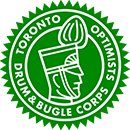
March On! ...the history of the
Toronto Optimists Drum & Bugle Corps
Toronto, Ontario, Canada
Their Hearts Belong to Daddy
A Boy Scout Band
Like all overnight successes, it actually took years. The Optimists actually began life as a Boy Scout band. A Toronto District scouting commissioner by the name of Al Baggs woke up one morning in 1955 and saw the writing on the wall. Most of the scouts in the band would be aging out of scouting. Baggs decided that the scout band needed to be reorganized with a new sponsor to help march into the future.
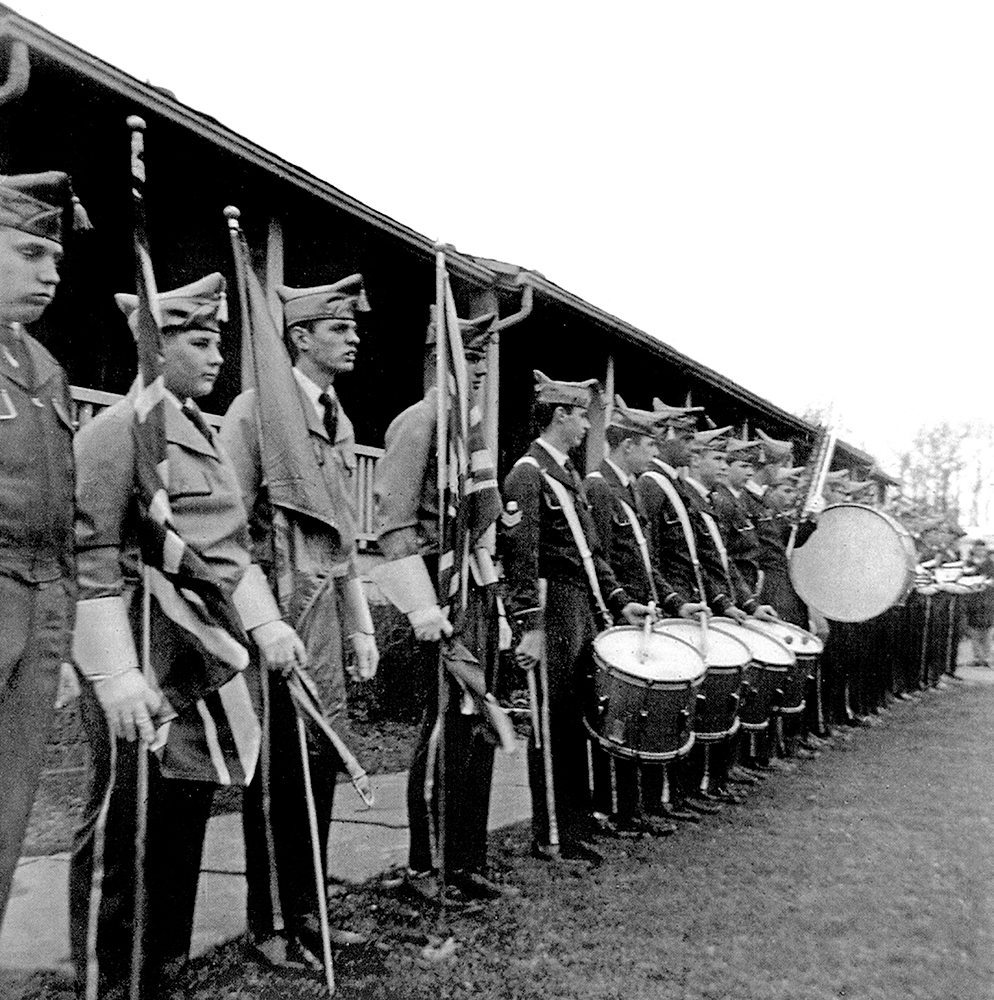
Baggs was the kind of man everyone would naturally call “Mister.” He commanded respect and led by example. To the boys in the corps he was known as Daddy Baggs and each member believed in him with all his heart.
He believed strongly in discipline, hard work and fair play. And he foresaw that drum corps had an attractiveness to it that went beyond scouting. So at the end of 1955, he went to the Downtown Toronto Optimists Club with a proposal. He offered to manage a new drum corps, which he believed would be a perfect fit for the club’s objective of providing interesting activities for boys.
His proposal was rejected. He wrote a letter asking the club to reconsider. He pointed out that the operating costs, which seemed to be a concern, could be controlled with prudent leadership. He also suggested that a parade corps would generate a lot of publicity for Optimism and offer musical training as part of their youth activities.
He cited the example of the Madison, WI, Optimists who co-sponsored a scout band in which more than 1,000 boys had received musical instruction since 1938. The club reversed its decision.
Opti-Corps
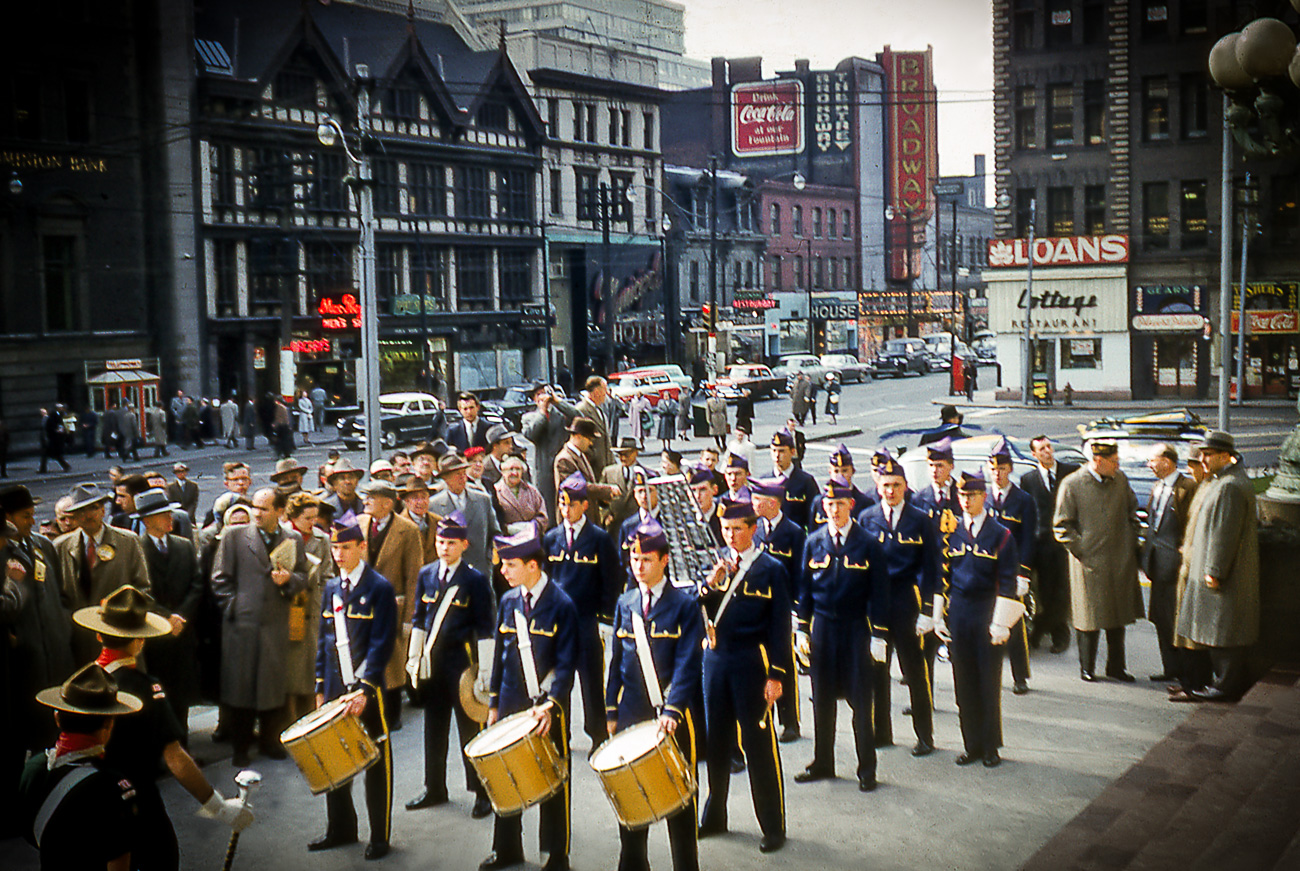
In 1956, Opti-Corps went out into the world with new uniforms of blue and gold and ended their first season by winning the novice championship at Canadian Nationals (the 1956 Championship certificate).
In 1957, they moved up to junior B and capped the year with another Canadian title. In two short years, Baggs and his charges had met with nothing but success and naturally his eye gazed steadily on the holiest grail of all: the Canadian Junior A Championships, a perch occupied by the all-powerful Scout House. The next step would determine whether Opti-Corps would soar like an eagle or sink like a stone. And Baggs was not the kind of man used to sinking.
He realized he could not achieve this step alone. He had two problems that needed fixing. He needed more members and more instructors. The answer to both existed in a high school on the other side of town.
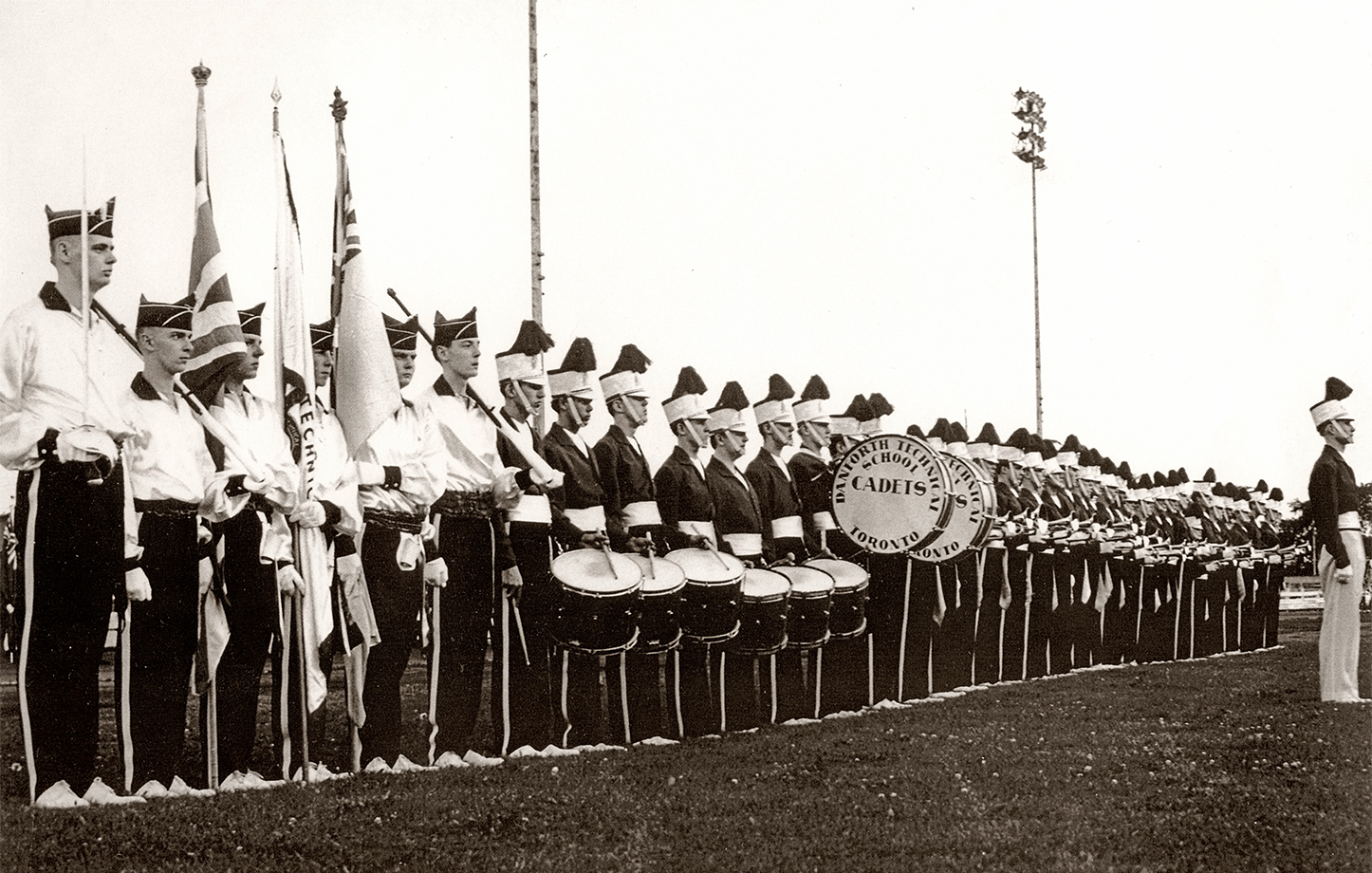
The Danforth Crusaders were already a junior A corps. They were organized as part of the music program at Danforth Technical School and they were under the guidance of a man who had started his drum corps life playing a plastic bugle. Barry Bell was a quiet, thoughtful man who was deeply in love with the idea of drum and bugle corps.
He and his good friend Lorne Ferrazzutti, were horn and drum instructors for the Crusaders, both having arrived there from Western Technical School, where they ran a similar program.
They went to Danforth because they were given free-rein to develop a drum corps from an Air Cadet marching band. But, as the saying goes, “nothing in life is free” and the school administration was impeding their progress. By the time Baggs came calling, Bell and Ferrazzutti were more than ready to listen.
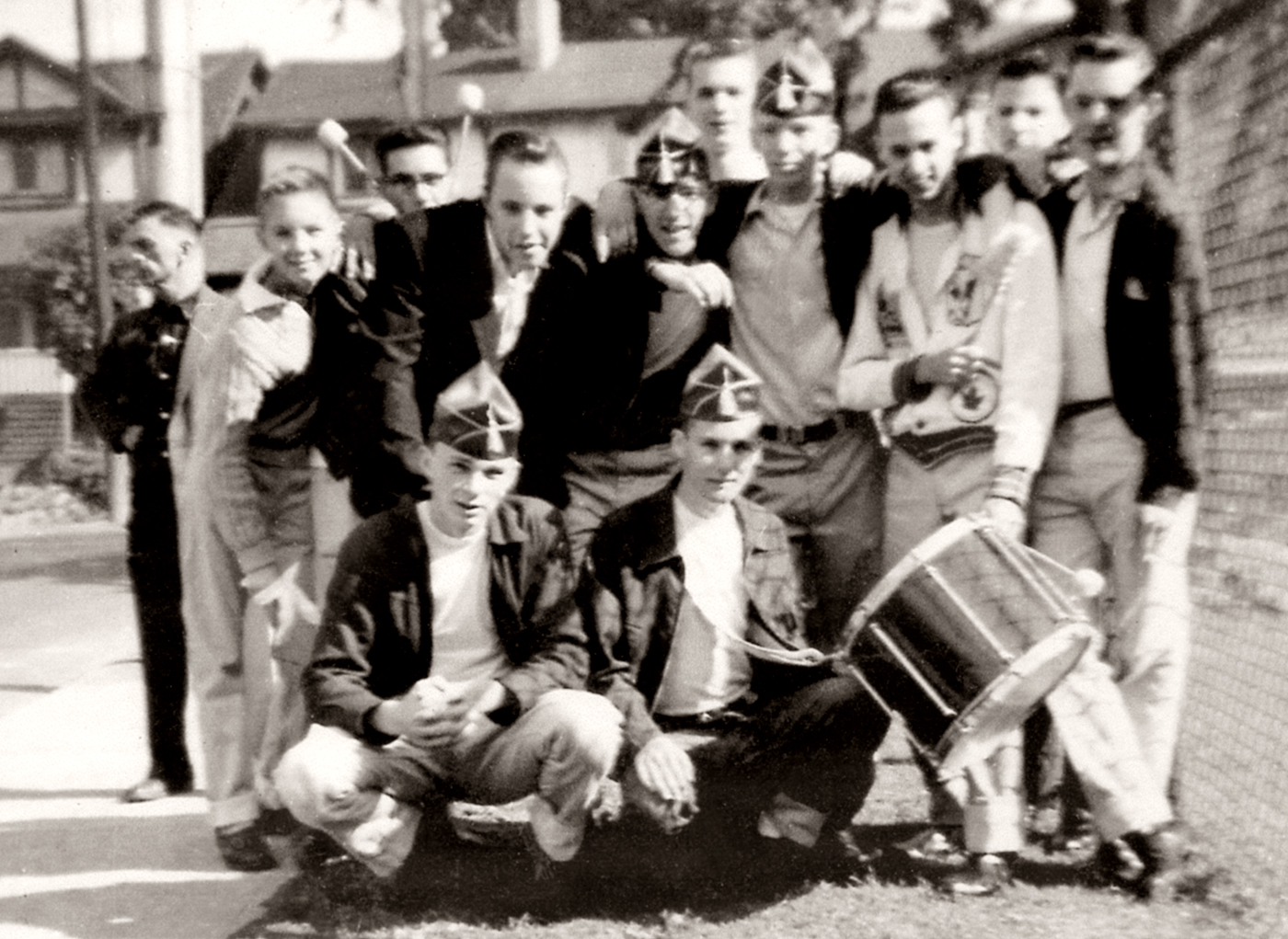
Bell signed on with Opti-Corps as bugle instructor and drill teacher. Ferrazzutti would instruct drums. Many Crusaders made the leap with them. At first rehearsal, it looked like a high school dance, with Opti-Corps members on one side, Danforth Crusaders on the other, staring at each other, eyes shifting and darting, wondering who would be the first to ask for a dance.
Baggs got the dance off on the right foot by informing this new group that the objective was to be Canadian junior A champions within two years. This bold plan was an aphrodisiac to members of both corps.
In 1958, the new Toronto Optimists made their first appearance at an indoor show at the University Armouries in Toronto. They wore brand-new uniforms designed by Bell - green satin blouses with a white diagonal stripe, black pants with white stripe, white shoes, a cummerbund of white and green and white shakos with green trim and white plumes. By the end of the year, they were Canada’s new champions, achieving in one year what they’d set out to accomplish in two.
| The Beginnings |  |
 |
For Real? |
| Navigate to the previous or next page of this story | ||||||
|---|---|---|---|---|---|---|
| The Beginnings |  |
 |
Are these Guys For Real? | |||